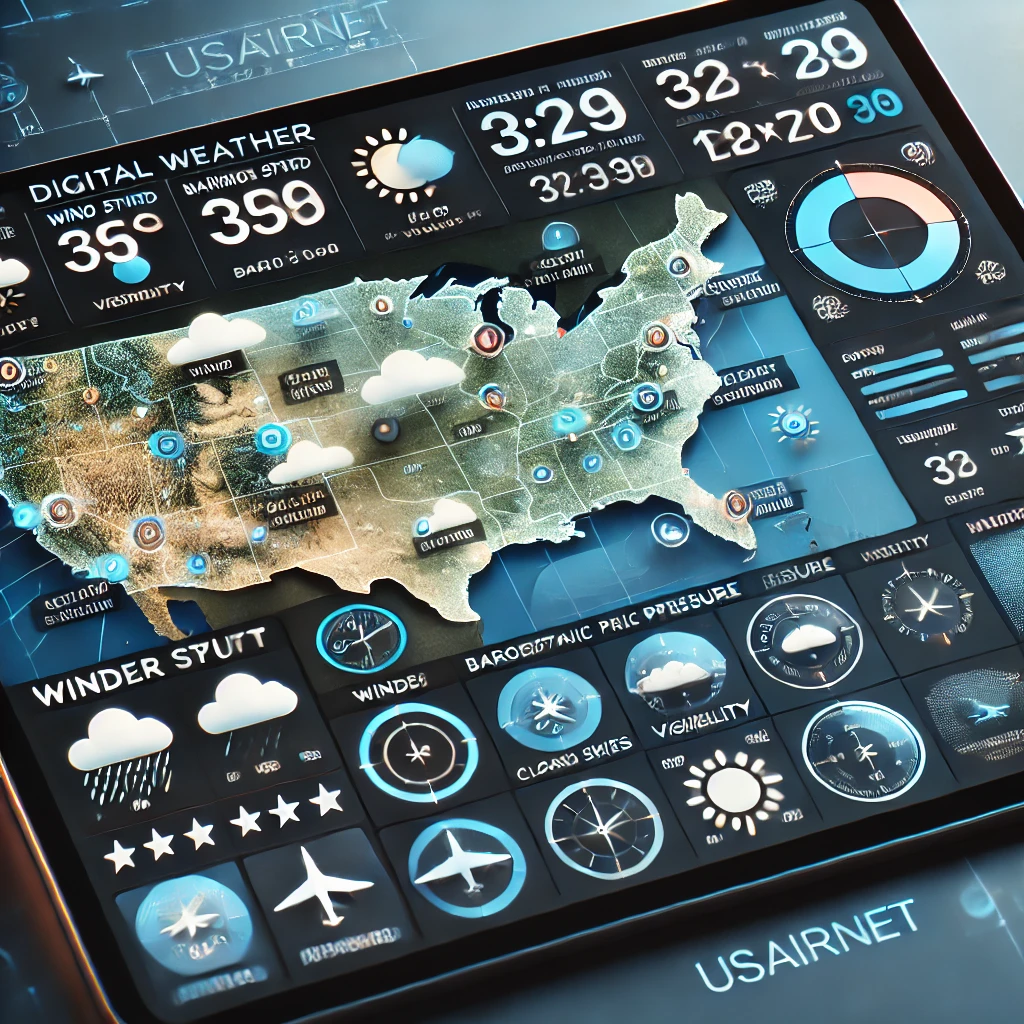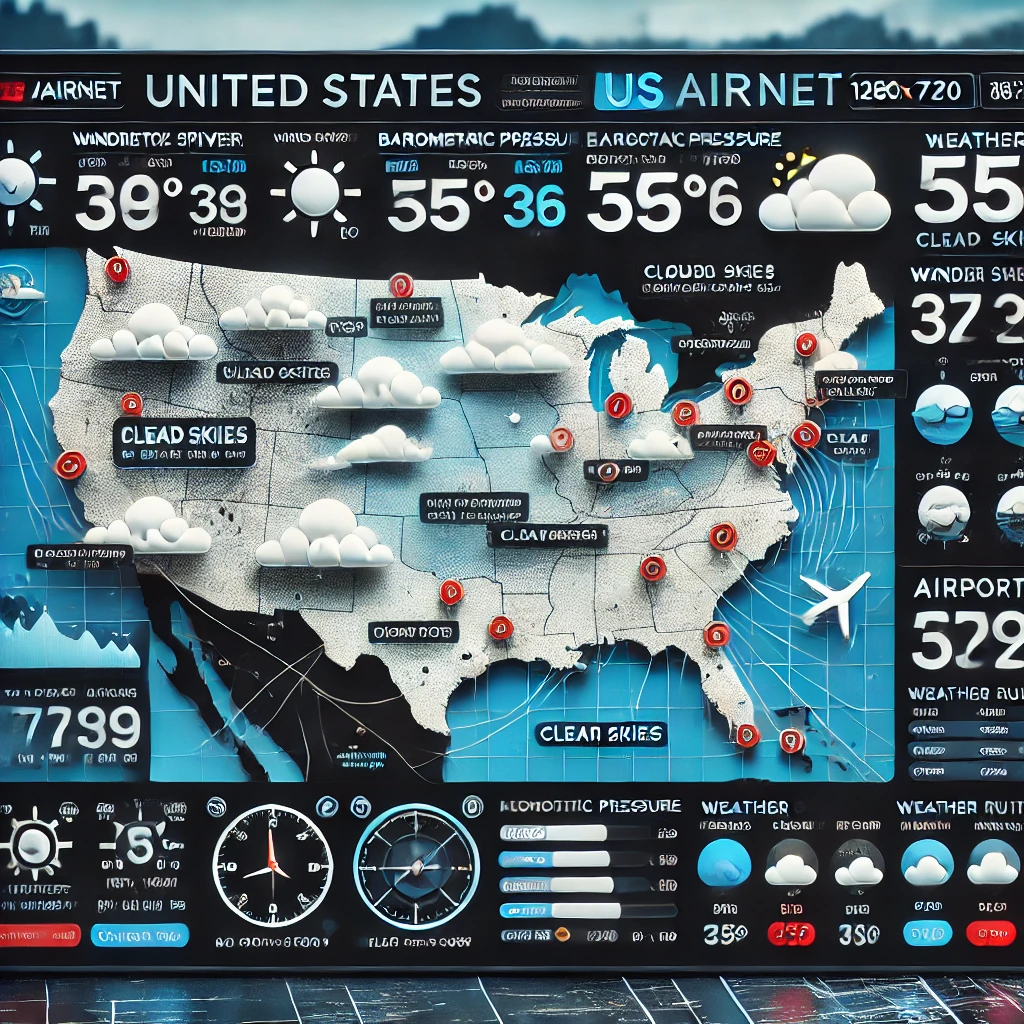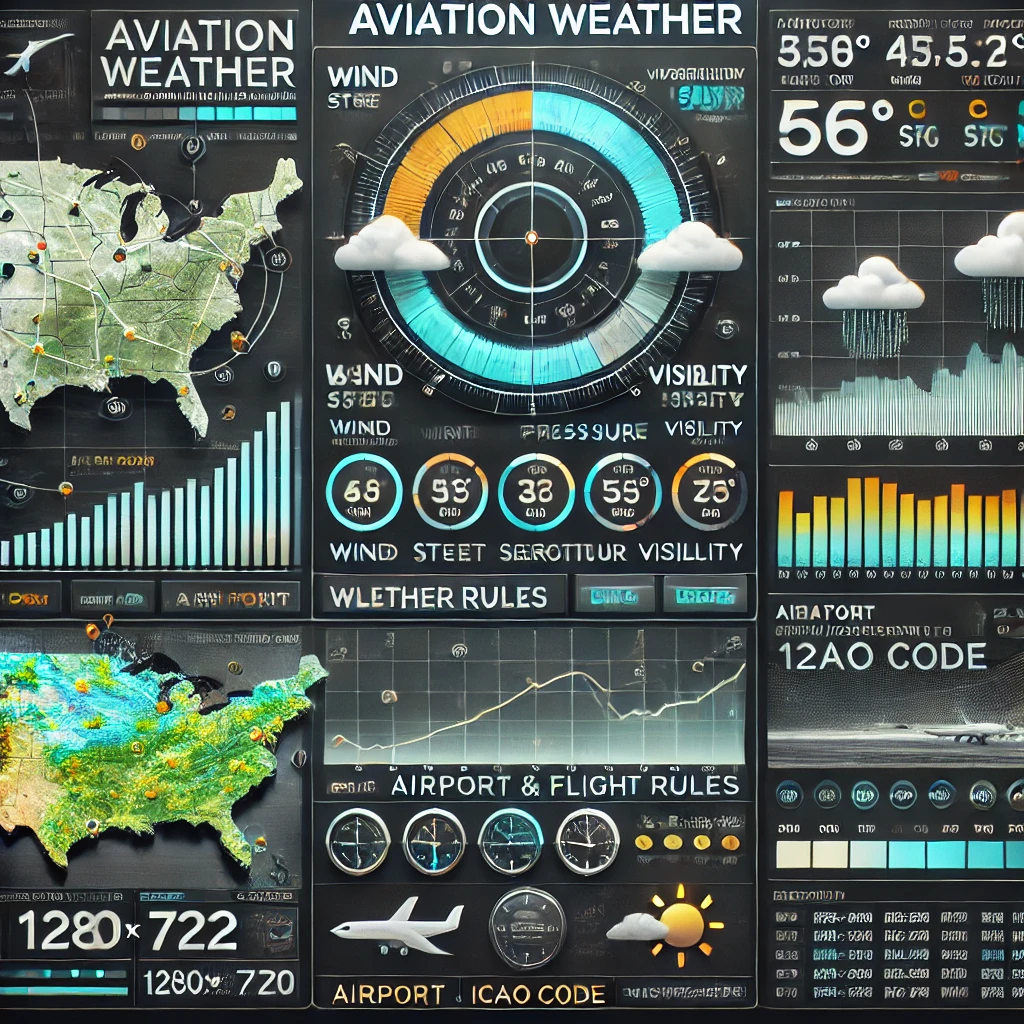Starting off with a common question: Why does aviation weather usairnet so much?
Aviation weather goes beyond the basic weather we see every day.
For pilots, understanding the aviation weather usairnet means understanding the risks involved in their flight path, and USAirnet’s aviation weather forecast is built specifically for that purpose.
Think of it like the ultimate radar for pilots, showing details that could impact flight safety like visibility, wind, and storm potential.
Every pilot, whether a commercial captain or a private flyer, relies on tools like USAirnet to know the skies.
How USAirnet Makes Aviation Weather Easy for Pilots
USAirnet isn’t just any aviation weather usairnet site—it’s tailored for aviation.
That’s what sets it apart and makes it invaluable for anyone taking to the skies.
When pilots log in, they’re looking at a dashboard filled with only the data that matters.
No fluff, just forecasts and real-time updates on turbulence, wind, and potential hazards.
So, why use USAirnet?
Here are some of the standout features that make it a go-to:
- Real-Time Updates: Changes in weather are constant, and USAirnet keeps pilots in the loop as conditions shift.
- Detailed Forecasts: From ground-level weather to high-altitude conditions, USAirnet offers a snapshot that’s tailored to aviation.
- Visibility and Cloud Cover: Knowing cloud levels and visibility can be the difference between a smooth flight and a struggle.
Visibility: Why It Matters for Pilots and How USAirnet Helps
Visibility isn’t just about seeing what’s in front; it’s about planning.
If visibility’s low, a pilot might delay aviation weather usairnet or adjust their route.
And USAirnet brings these numbers front and center.
For instance, pilots often see visibility updates in aviation weather usairnet making it easier to gauge whether they need to adjust their route to avoid any surprises.
Take someone flying over a mountainous are aviation weather usairnet reduced visibility can mean flying too close to ridges or missing a landing strip on approach.
USAirnet removes that guesswork, offering visibility data that’s constantly updated.

FAQ: What Do Pilots Really Want to Know About USAirnet?
1. Does USAirnet Offer Free Access to Aviation Weather?
Yes! Pilots can check basic aviation weather without cost on USAirnet, though a paid subscription unlocks extra features.
It’s perfect for private flyers who may only need occasional checks before flights.
2. How Accurate are USAirnet’s Forecasts?
USAirnet is known for accuracy, pulling in data from top aviation weather usairnet sources tailored for aviation.
Pilots trust it because it’s not just about predicting rain; it’s about forecasting turbulence, crosswinds, and other conditions critical to flying.
3. Is USAirnet Only for Professional Pilots?
Nope, it’s open to everyone.
From commercial pilots to weekend flyers, USAirnet is a resource meant to serve any level of aviation enthusiast.
4. How Often Does USAirnet Update its Weather Information?
The platform updates frequently throughout the day, sometimes every hour, so pilots aren’t left guessing about changes in conditions.
Wind: The Make or Break of a Flight Plan
Wind direction and speed are critical when flying, and USAirnet covers these essentials in its forecasts.
Imagine a pilot planning to land at an airport known for its crosswinds.
Without current wind data, that landing could be rough—or even risky.
USAirnet provides hourly wind updates, giving pilots the ability to prepare for landing conditions well in advance.
The goal here is simple: make sure every flyer, from private to commercial, has the tools to make informed decisions about wind’s impact on their flight.
Weather Hazards: Why USAirnet is a Pilot’s Best Friend
Aviation weather hazards are nothing like what we see in our daily lives.aviation weather usairnet
It’s not just about rain; it’s about hail, ice, turbulence, and lightning—all things that could be fatal if unexpected.
For pilots, USAirnet gives a heads-up on each hazard.
Here’s a quick rundown of some hazards USAirnet forecasts:
- Turbulence Alerts: Whether it’s mild or severe, turbulence can make or break a flight experience, and USAirnet highlights potential hotspots.
- Lightning Warnings: Sudden lightning in a flight path? Pilots can reroute thanks to real-time updates from USAirnet.
- Icing Conditions: This one’s big, especially for smaller aircraft. Icing risks can be deadly, so USAirnet’s forecast covers icing probabilities and where pilots might expect them.
Personal Story: A Pilot’s Perspective on USAirnet
One pilot shares his experience with aviation weather usairnet fly privately, mostly short trips.
Weather isn’t just about rain or shine; it’s about knowing what’s happening at every altitude.
USAirnet has saved me from flying into turbulence more times than I can count.”
For many pilots, USAirnet isn’t just helpful—it’s essential.
It’s that extra tool that helps them fly safer, even when the skies are unpredictable.
How to Get Started with USAirnet’s Aviation Weather
So, how can you dive in?
Head over to aviation weather usairnet create an account, and get familiar with the layout.
Explore its basic features, especially the visibility, wind, and hazard forecasts.
This quick start is all it takes to see why USAirnet is popular among flyers.
Each pilot’s needs are different, so getting hands-on will show exactly how USAirnet can fit into your flight planning.

Should You Rely Solely on USAirnet for Aviation Weather?
USAirnet is a fantastic tool, but it’s worth mentioning that experienced pilots use it alongside other tools.
For those navigating unpredictable aviation weather usairnet , cross-checking data can provide that extra layer of assurance.
While USAirnet is dependable, there’s value in double-checking with secondary sources to catch any small changes that might not immediately appear.
The Big Takeaway: Why USAirnet for Aviation Weather?
Here’s the bottom line: for pilots, staying informed is a game-changer, and USAirnet makes that possible.
From reliable wind updates to up-to-the-minute hazard alerts, this platform offers what pilots need to fly with confidence.
Whether you’re a commercial captain or just flying for fun, USAirnet is like a co-pilot, always ready to provide the weather info that matters most.
And remember, USAirnet has both free and paid options, so it’s accessible whether you’re flying daily or just once in a while.
In Closing: Keep USAirnet on Your Radar for Aviation Weather
For pilots in the know, USAirnet has become essential.
From visibility to wind speed, it’s there to offer peace of mind before taking to the skies.
When planning your next flight, make sure USAirnet is part of your toolkit for a safer, smoother journey

